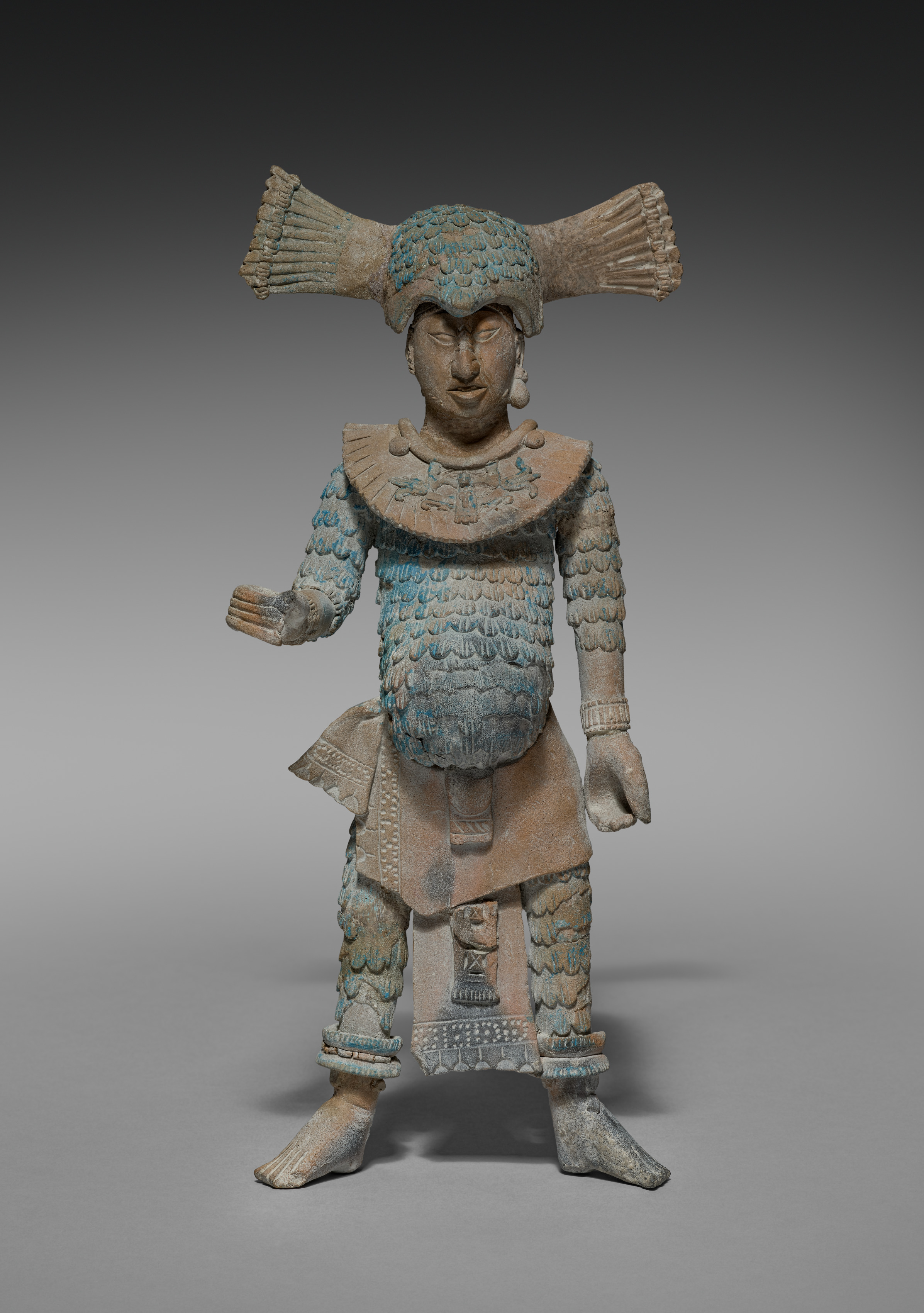The Cleveland Museum of Art
Collection Online as of April 16, 2024

Warrior Figurine with Removable Headdress
600–900
Overall: 26.1 cm (10 1/4 in.)
Location: 233 Mesoamerican and Intermediate Region
Did You Know?
Maya blue pigment was made by combining clay with indigo in a complex technique developed around the ninth century.Description
The major offerings placed in the Maya graves of Jaina Island were ceramic figurines, some of Mesoamerica's finest, that depict deities and humans in a variety of roles. This warrior, his headdress removable, once probably held weapons and wears either quilted cotton armor or the feathered uniform of a military order. We don't know why such figures are often pot-bellied.- The Cleveland Museum of Art. Handbook of the Cleveland Museum of Art/1966. Cleveland, OH: The Cleveland Museum of Art, 1966. Reproduced: p. 293 archive.orgThe Cleveland Museum of Art. Handbook of the Cleveland Museum of Art/1969. Cleveland, OH: The Cleveland Museum of Art, 1969. Reproduced: p. 294 archive.orgThe Cleveland Museum of Art. Handbook of the Cleveland Museum of Art/1978. Cleveland, OH: The Cleveland Museum of Art, 1978. Reproduced: p. 397 archive.orgFortenberry, Diane, ed. The Art Museum. London; New York: Phaidon Press, 2017. Reproduced: P. 232, no. 1
- The Blood of Kings: A New Interpretation of Maya Art. Kimbell Art Museum, Fort Worth, TX (organizer) (May 17-August 24, 1986); The Cleveland Museum of Art, Cleveland, OH (October 8-December 14, 1986).Year in Review (1963). The Cleveland Museum of Art, Cleveland, OH (organizer) (November 27, 1963-January 5, 1964).
- {{cite web|title=Warrior Figurine with Removable Headdress|url=false|author=|year=600–900|access-date=16 April 2024|publisher=Cleveland Museum of Art}}
Source URL:
https://www.clevelandart.org/art/1963.93